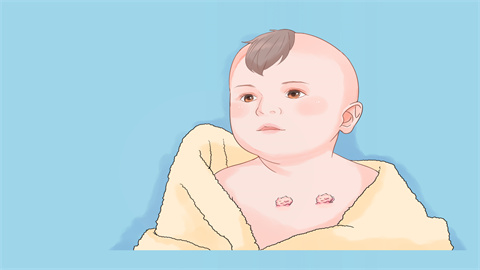What causes a newborn's head to tilt backward?
In general, neck hyperextension in newborns may be caused by normal physiological reflexes, uneven development of neck muscles, vitamin D deficiency rickets, bilirubin encephalopathy, or congenital muscular torticollis. If discomfort symptoms occur, it is recommended to seek timely medical evaluation and treatment at a qualified hospital. Specific analyses are as follows:

1. Normal Physiological Reflex
Newborns may exhibit a neck stiffness reflex, which causes the head to tilt backward and limbs to extend when stimulated externally. This reflex typically diminishes gradually with age. No special treatment is required; avoid sudden stimuli during daily care, handle the baby gently, and closely monitor changes in the reflex.
2. Uneven Neck Muscle Development
Newborns have weak neck muscles and asynchronous development between anterior and posterior muscle groups, which can lead to transient neck hyperextension. Encourage tummy time to practice lifting the head, thereby strengthening neck muscles. When feeding or holding the baby, provide appropriate neck support.
3. Vitamin D Deficiency Rickets
Vitamin D deficiency impairs calcium absorption, leading to softened bones and poor structural support, which may result in neck hyperextension. Under medical guidance, treatments such as vitamin D drops, calcium carbonate D3 granules, or calcium gluconate oral solution can be used. Additionally, increase sun exposure to promote natural vitamin D synthesis.
4. Bilirubin Encephalopathy
Excessively high bilirubin levels can damage the nervous system and affect muscle tone, causing severe neck hyperextension with opisthotonus. Immediate medical attention is required. Treatments under medical supervision may include sodium phenobarbital for injection, human albumin, and ademetionine (adenosylmethionine) for injection. In severe cases, exchange transfusion may be necessary.
5. Congenital Muscular Torticollis
Fibrosis and contracture of the sternocleidomastoid muscle pull the head to one side, often accompanied by neck hyperextension. Under medical guidance, local injections of compound danshen injection may be administered, along with massage and physical therapy. If conservative treatments fail, surgical release of the sternocleidomastoid muscle may be required.
Routinely supplement vitamin D and maintain balanced nutrition. Engage in frequent parent-infant interaction to encourage active neck movement. Attend regular health check-ups to monitor developmental progress, and seek medical advice promptly if persistent neck hyperextension does not improve.






